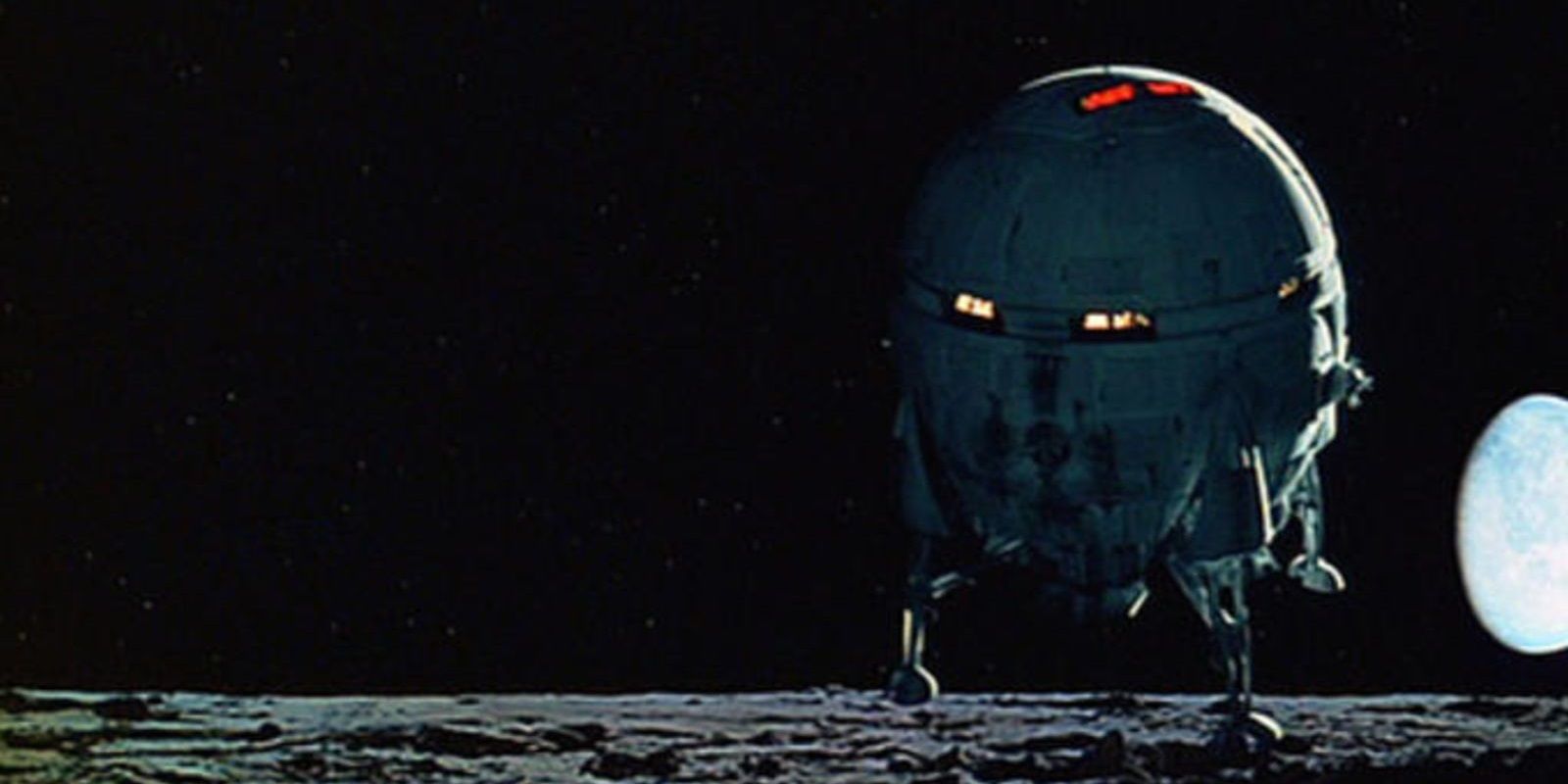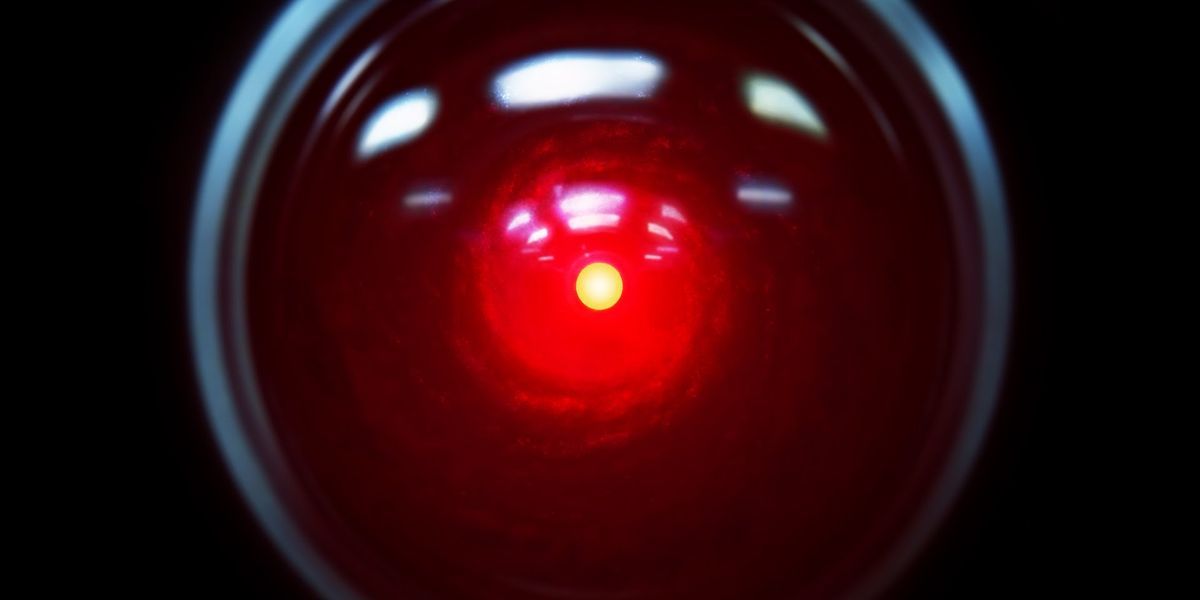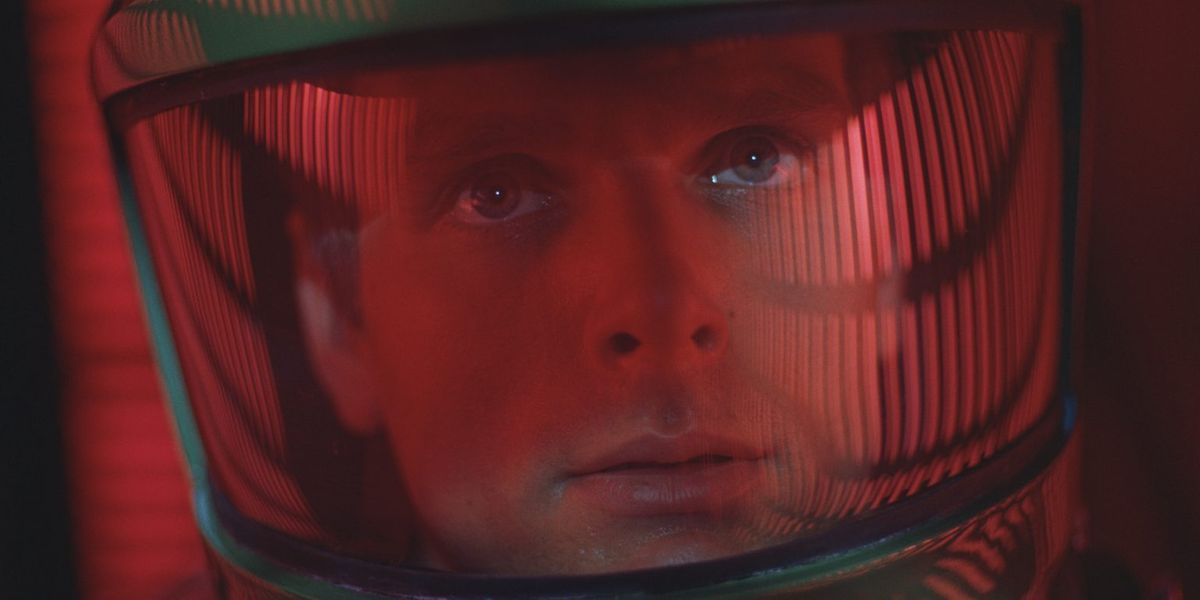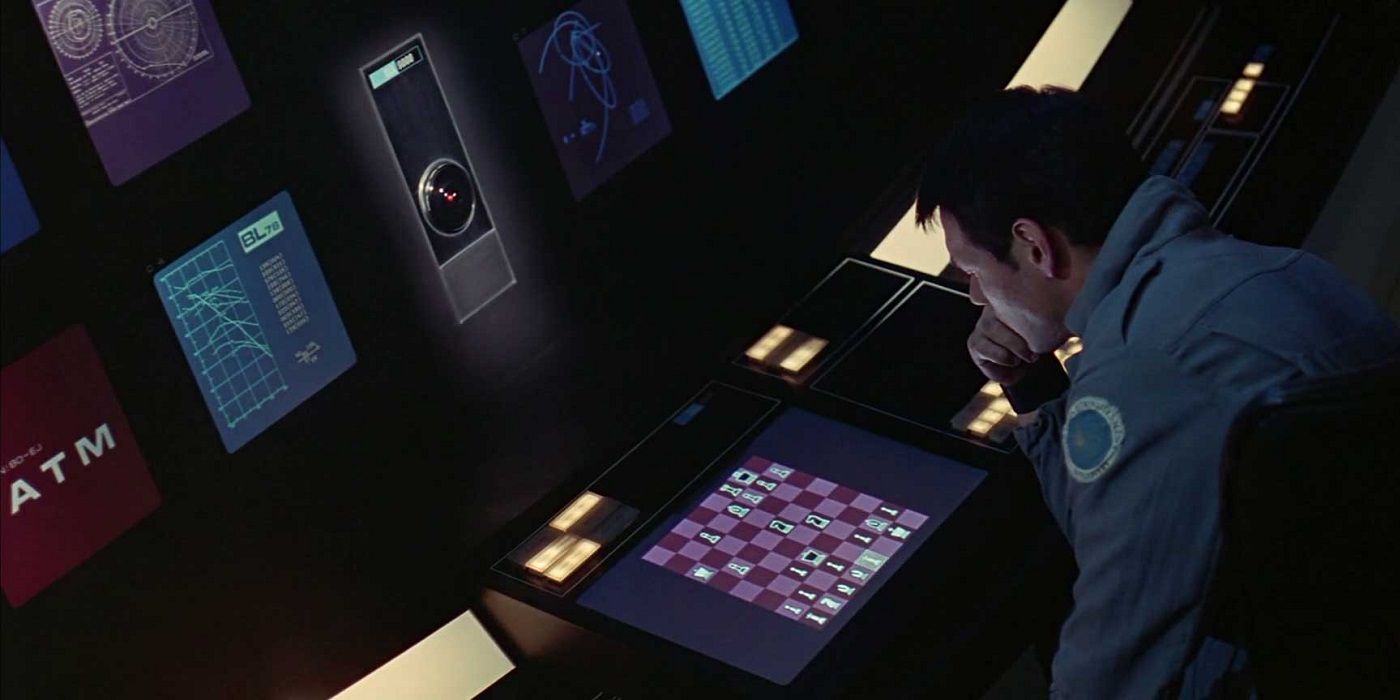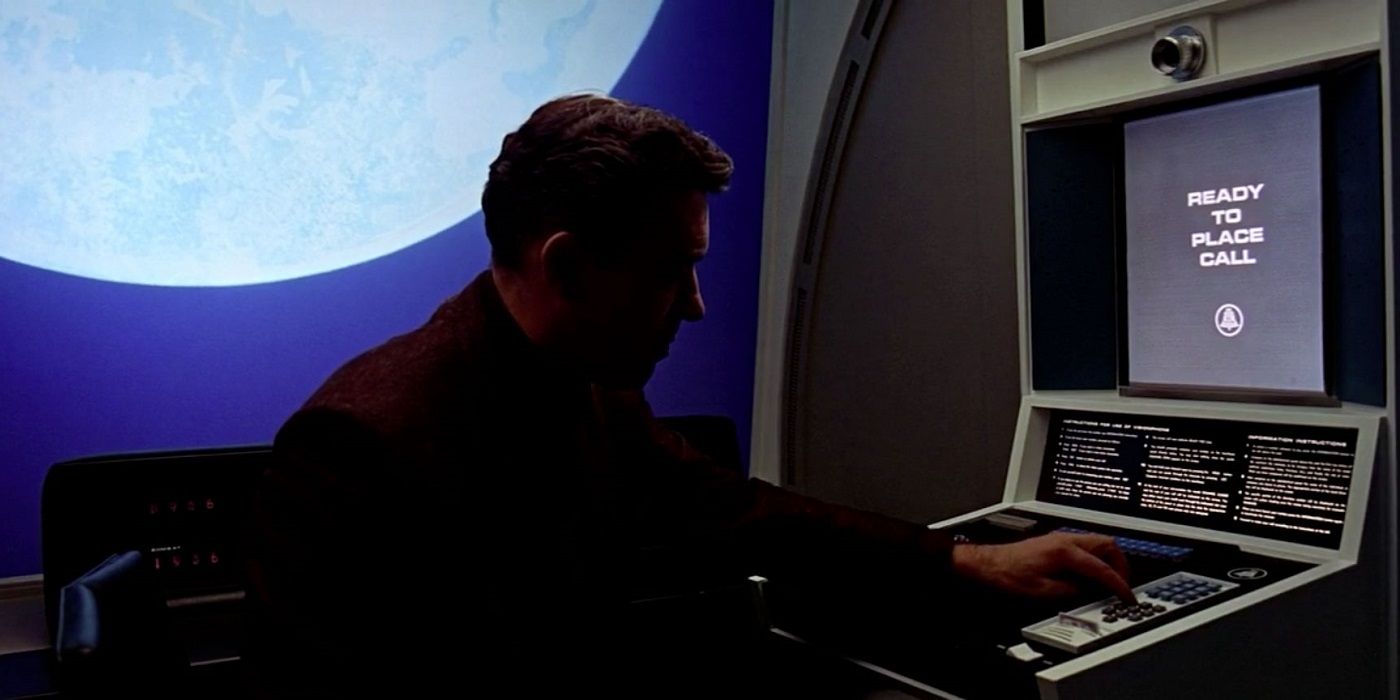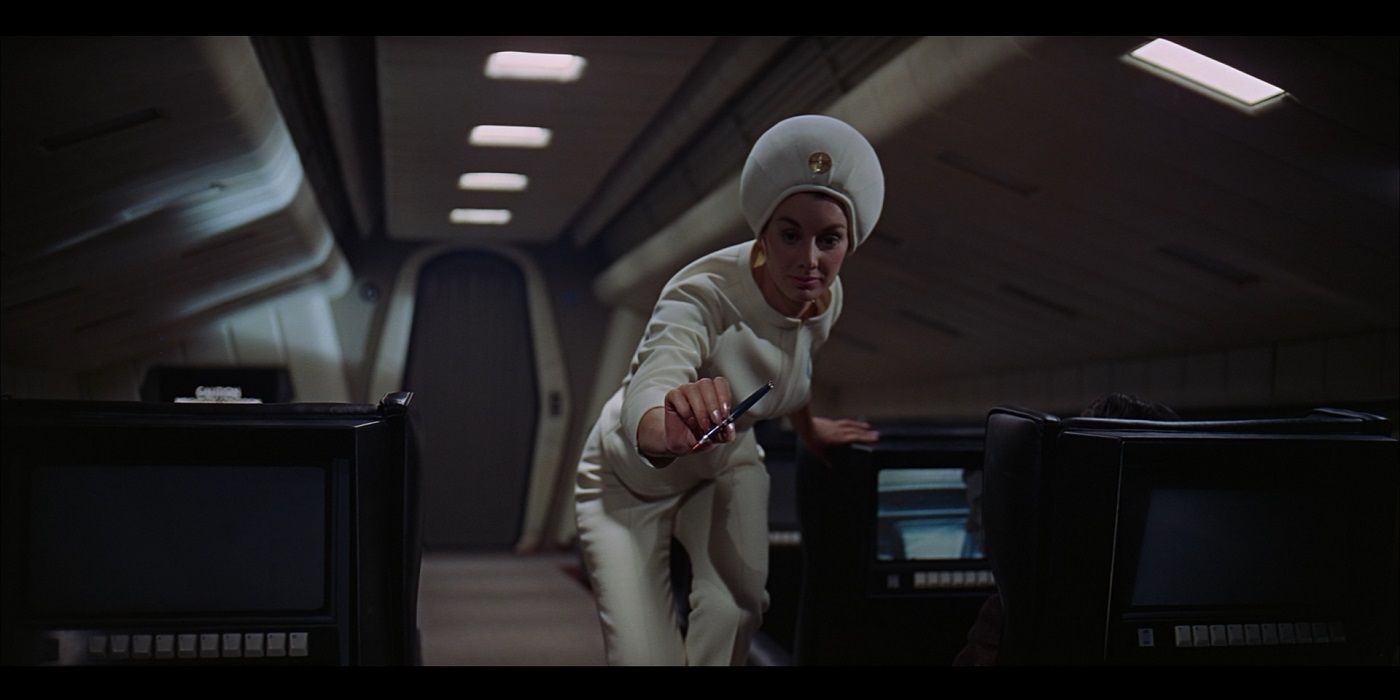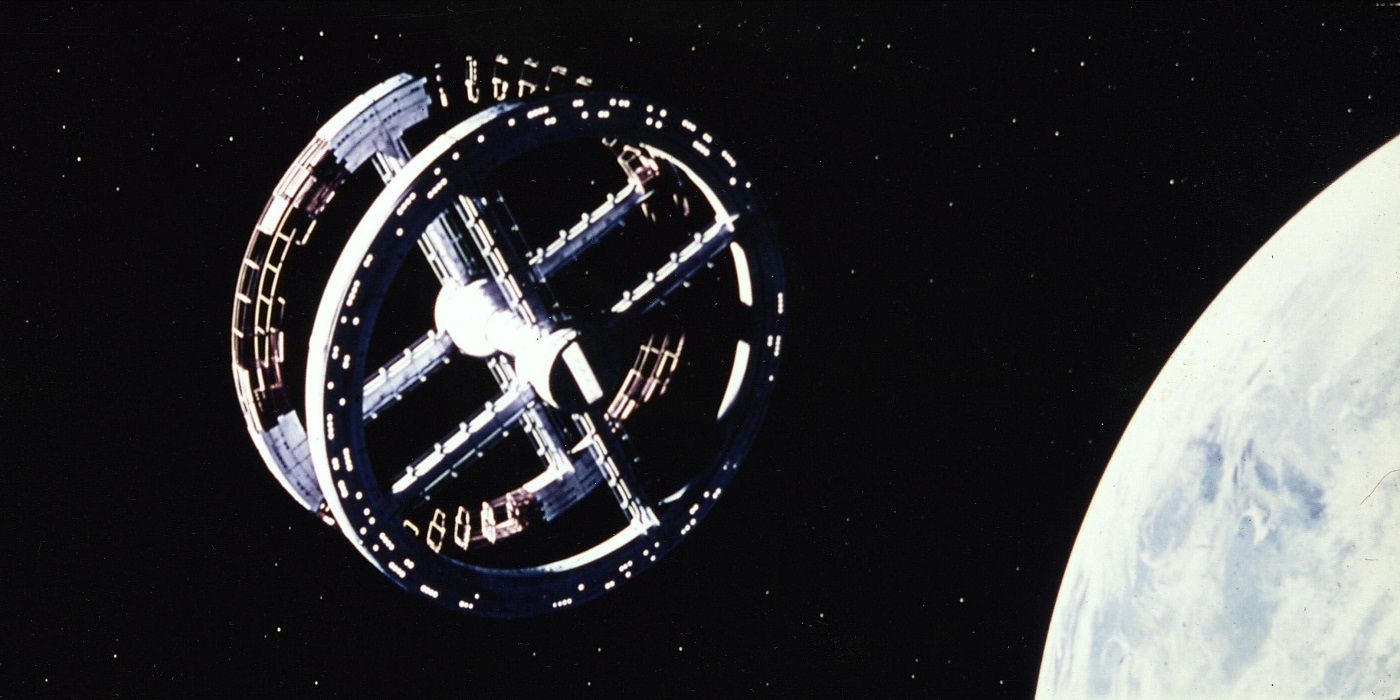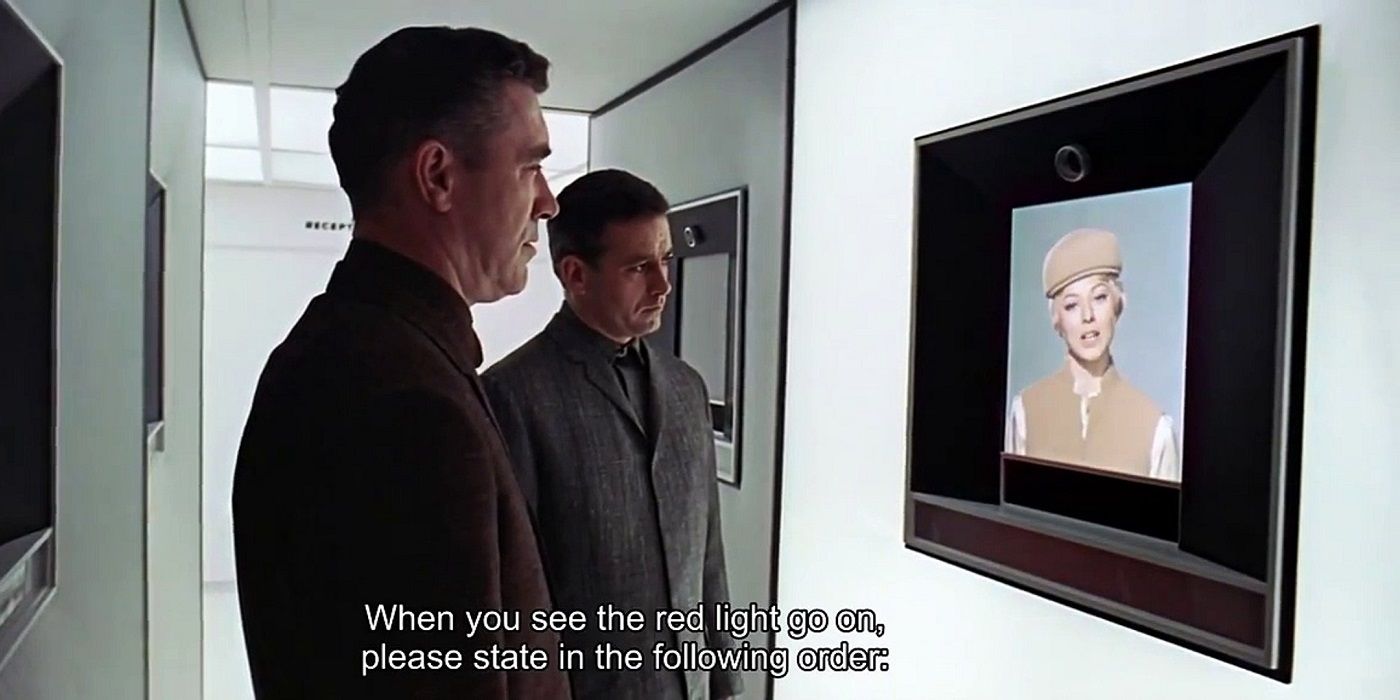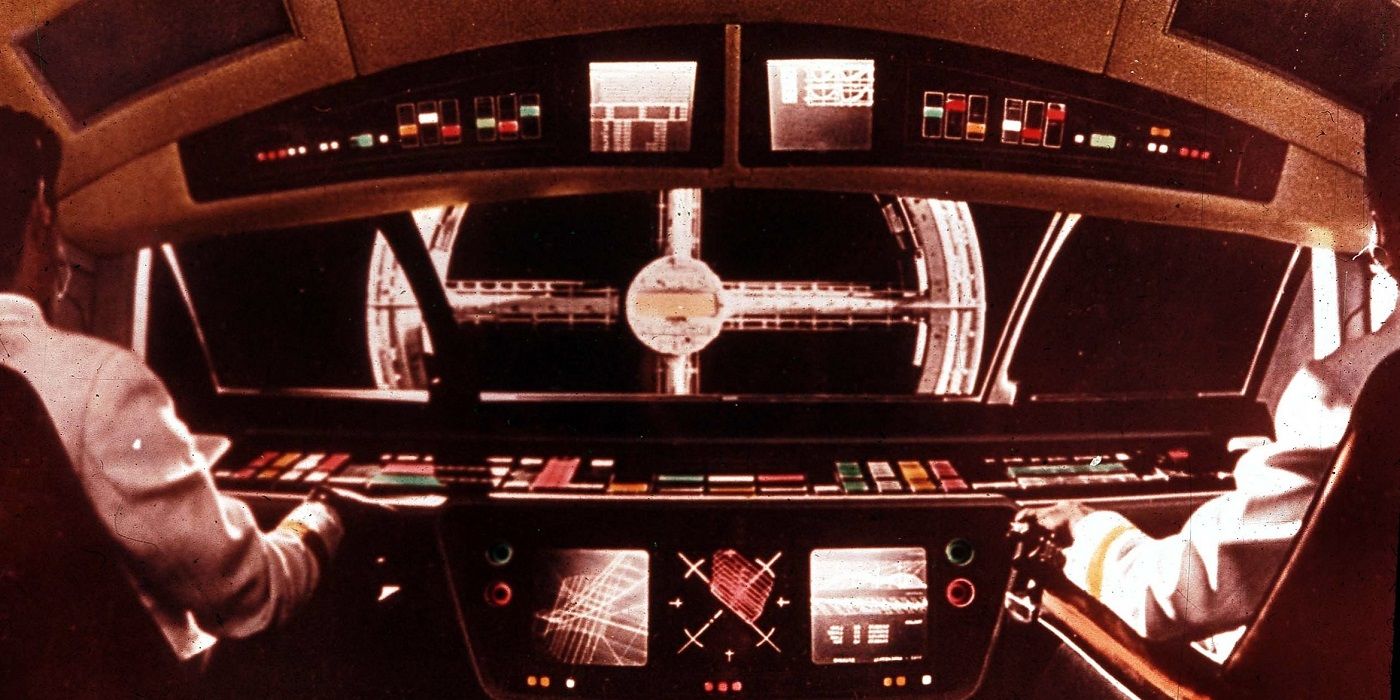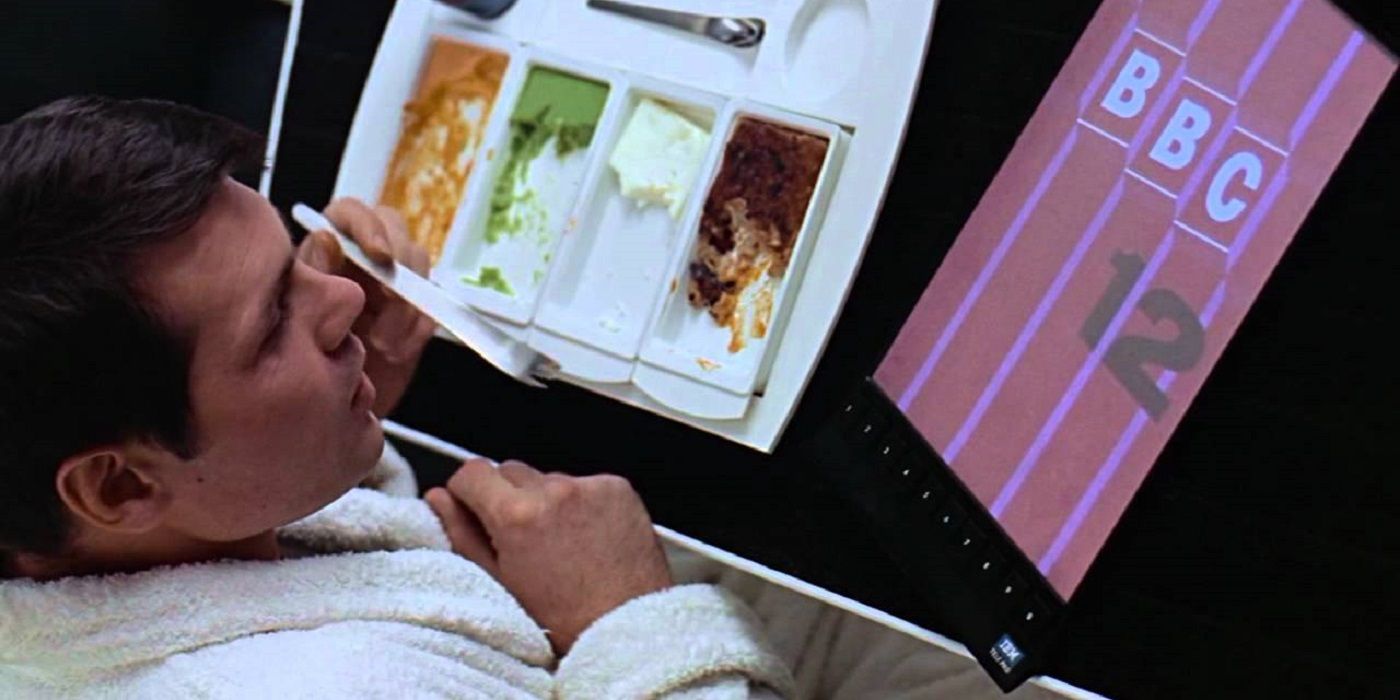Stanley Kubrick stands as one of the greatest filmmakers to ever walk this planet. One of his most celebrated and influential works is the science-fiction masterpiece 2001: A Space Odyssey. Its bizarre story spanning hundreds of thousands of years culminates in an unforgettable climax which still confounds many to this day. One of its most impressive aspects is the detailed look at the future.
Every set is brimming with endless detail most viewers would never spot, but it helps contribute to the overall atmosphere. With more than fifty years having passed since its release, we thought it a good time to look back at the movie's predictions and see what gadgets within the picture actually came to be in the real world. There's plenty in the film humanity has yet to achieve, but there's just enough to make one wonder if Kubrick was a fortune teller.
Landing On The Moon
By 1968, scientists at NASA were still hard at work figuring out how to get to the moon. In Kubrick's film, humanity had accomplished this and had conquered much of the immediate dwellings of outer space. Just a year later, the Apollo 11 mission made its way to the Lunar surface.
The landmark event and breakthrough for humanity was televised and went down as one of the most historic moments of the twentieth century. Unfortunately, no colonies or civilian space travel exist yet as depicted in the movie.
Artificial Intelligence
If the movie had any sort of villain, it was HAL 9000, an artificial intelligence that attempts to kill the crew on board the ship Discovery after the humans resolve to shut him down. In 1968, computers could already play chess, but the leaps and bounds made since then with A.I. are coming ever closer to creating a being like HAL.
Of course, this is still years, perhaps generations, from coming to fruition, but it is on its way. Assuming the technology does get as advanced, here's hoping they put some safeguards in to prevent an incident like the one aboard the Discovery.
Voice-Activated Technology
The crew of the Discovery interacts with the ship using their voices. They freely converse with HAL, a computer. Back in 1968, such a technology was only working in prototypes deep in labs away from the public. These days, however, most of our devices have the option to be operated purely with our voice.
Phones, smart devices for the home like Alexa, and many video game consoles recognize speech and function according to orders. One day they'll start recognizing shameful secrets and spew them out at random when the owner has company over.
Flat Screen Technology
Computers back in 1968 numbered in literally the low thousands all across the world and were absolutely gigantic. Their computational power was hilariously weak compared to what goes on in the palm of our hands today, but they still deserve respect for paving the way.
The movie depicts computers with flat-screen panels displaying all the information. Flat-screen tech was in its infancy back in the '50s but had too many issues to be commercially viable. Only in the '80s did small flat-screen televisions come into the market, and then in the late '90s larger versions became available.
Video Communication
After the movie's massive leap forward through history, one character uses a booth to make a call back home to his daughter. This isn't just any call, however; he speaks with her through video communication.
For several years now, phones and laptops have been able to connect people through visuals as well as audio. Given the portability of our devices, the booths in 2001 make this scene look quaint now. Back then, though, it was an awe-inspiring idea to think the future would allow for long-distance communication.
In-Flight Entertainment
So the prediction of luxurious, convenient space travel for the masses was a bit off the mark, but a few things about the sequence depicting civilian space flight were rather accurate. While traveling, each passenger is relaxing to an in-flight movie with a screen on the back of the seat in front of them.
This is commonplace today on most flights, but diversions of this caliber were not introduced until the late '80s. Even then, it was a rarity until the '90s when in-flight entertainment became a focus of airline travel as it became more accessible.
Space Stations
The commercial space flight docks at a space station. An inhabitable structure floating in space wasn't a reality until 1971, three years after 2001. Even then, they are barely recognizable as the way we think of space stations today.
They would have to be abandoned after supplies ran out. While not just anyone can board a space station like the film, they can be continually resupplied and exist for many years. Additionally, people cannot walk around as comfortably as they do in Kubrick's classic, as they still have to adjust to weightlessness.
Voice-Print Identification
Security back in 1968 was padlocks and a guy named Scruffy, hired to work the graveyard shift to make sure no one broke into places they shouldn't stick their noses. In 2001, voice recognition is used as a security measure to confirm Dr. Floyd's identity before the secret meeting regarding the discovery of the Monolith on the Moon.
To ensure the meeting's secrecy, he has to tell a computer his name and nationality. Voice-print identification didn't come into existence until several years after the film, and now is used for evidence in court and security measures.
Glass Cockpits
This term doesn't literally mean a cockpit made of glass. It refers to a cockpit made up of digital displays instead of analog meters. This tech is on display during the commercial space flight near the beginning. The first of these in the real world weren't in use until 1970, but they were shortly discontinued.
Use on commercial flights wasn't commonplace until the early 1980s. Thinking glass cockpit is somewhat worrying, considering glass's apparent fragility mixed with the intensity of flight, but names are often misleading.
Tablets
Dave straight-up uses a tablet while aboard the Discovery in the act's opening sequence, eating while watching BBC news. Many of the prior technologies listed above are somewhat approximate to what the world really got, but something about the tablet's design really evokes the modern look of what humans use today.
The only thing missing is an Apple logo. Kubrick and Arthur C. Clarke could not have put it there, however, for fear of fully giving away their true clairvoyant abilities.


